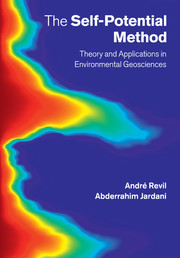Description
The Self-Potential Method
Theory and Applications in Environmental Geosciences
Authors: Revil André, Jardani Abderrahim
A key reference on the self-potential method for researchers, professionals and students in geophysics, environmental science, hydrology and geotechnical engineering.
Language: English
Subjects for The Self-Potential Method:
Approximative price 64.99 €
In Print (Delivery period: 14 days).
Add to cart
The Self-Potential Method
Publication date: 03-2018
Support: Print on demand
Publication date: 03-2018
Support: Print on demand
Approximative price 161.46 €
In Print (Delivery period: 14 days).
Add to cart
The self-potential method theory and applications in environmental geosciences
Publication date: 07-2013
383 p. · 17.7x25.3 cm · Hardback
Publication date: 07-2013
383 p. · 17.7x25.3 cm · Hardback
Description
/li>Contents
/li>Biography
/li>
The self-potential method enables non-intrusive assessment and imaging of disturbances in electrical currents of conductive subsurface materials. It has an increasing number of applications, from mapping fluid flow in the subsurface of the Earth to detecting preferential flow paths in earth dams and embankments. This book provides the first full overview of the fundamental concepts of this method and its applications in the field. It discusses the historical perspective, laboratory investigations undertaken, the inverse problem and seismoelectric coupling, and concludes with the application of the self-potential method to geohazards, water resources and hydrothermal systems. Chapter exercises, online datasets and analytical software enable the reader to put the theory into practice. This book is a key reference for academic researchers and professionals working in the areas of geophysics, environmental science, hydrology and geotechnical engineering. It will also be valuable reading for related graduate courses.
Foreword; Preface; 1. Fundamentals of the self-potential method; 2. Development of a fundamental theory; 3. Laboratory investigations; 4. Forward and inverse modeling; 5. Applications to geohazards; 6. Application to water resources; 7. Application to hydrothermal systems; 8. Seismoelectric coupling; Appendix A: a simple model of the Stern layer; Appendix B: the u-p formulation of poroelasticity; References; Index.
André Revil is Associate Professor at the Colorado School of Mines and Directeur de Recherche at the National Centre for Scientific Research (CNRS) in France. His research focuses on the development of new methods in petrophysics, and the development of electrical geophysical methods applied to geothermal systems, water resources and oil and gas reservoirs. Dr Revil is presently Chief Editor of the Journal of Geophysical Research – Solid Earth, Associate Editor of the Vadose Zone Journal and editorial member of the International Journal of Mathematical Modelling and Numerical Optimization and has published 156 peer-reviewed papers. He received the Bronze Medal from the CNRS for outstanding research in 2003 and an award of excellence from the American Rock Mechanics Association (ARMA) in 2004.
Abderrahim Jardani is Associate Professor at the University of Rouen, where he also obtained his Ph.D. in geophysics in 2007. His research interests centre on environmental geophysics, mathematical modelling of hydrologic systems and inverse problems. Dr Jardani has authored twenty-seven peer-reviewed publications in the field of hydrogeophysics, especially in the theory of self-potential signals and its application to environmental problems. He is a member of the American Geophysical Union.
Abderrahim Jardani is Associate Professor at the University of Rouen, where he also obtained his Ph.D. in geophysics in 2007. His research interests centre on environmental geophysics, mathematical modelling of hydrologic systems and inverse problems. Dr Jardani has authored twenty-seven peer-reviewed publications in the field of hydrogeophysics, especially in the theory of self-potential signals and its application to environmental problems. He is a member of the American Geophysical Union.
© 2024 LAVOISIER S.A.S.
These books may interest you

Near-Surface Applied Geophysics 83.43 €


